Gibson USA 2018 Gary Clark Jr Signature SG Gloss Yellow
Gary Clark Jr gets a triple P90 tone monster
The new Gibson USA Artist Series 2018 Gary Clark Jr. Signature SG Gloss Yellow is a very cool looking (if you like yellow) three pickup design and looks set to be a limited run for the artist.
Triple P90
Gary Clark Jr is a great Blues player and this latest offering from Gibson USA certainly looks like the perfect guitar for him, you may of course not be such a fan of the bright yellow finish, but you cannot say that the guitar doesn’t stand out from your average red or black Standard SG model.
Following on from the success of his signature Epiphone ‘Blak & Blu’ Casino, Gibson have stepped up and delivered the Gary Clark Jr. Signature SG
Loaded with three single coil P90 pickups – P90SR neck pickup, P-90SM middle pickup, P90ST and with an aluminium stop tailpiece with a traditional ABR bridge, this SG looks simple enough to use.
With three Volume knobs and only one Tone control, you’ll have to get used to that extra P90 pickup, if you have come from a more traditional twin pickup design SG, but it should give you some useful extra tonal options.
24 fret
It is a slim taper neck design and the traditional 24.75-inch scale length and so should feel like a regular SG neck profile, as they tend to have slimmer ’60s neck profiles more often than not. Also, it has 24 frets rather than the more traditional 22 of a Standard SG.
Of course, you get a mahogany body and neck coupled with a rosewood fretboard, so all pretty traditional construction wise. Gibson list is as having all the necessary paperwork for CITES regulations, due to the rosewood fretboard being used. We will probably see a lot more of these certificates/paperwork in the coming years, especially from the more traditional guitars builders like Gibson, so get used to them.
Yellow
Yes, it is rather yellow and that nitrocellulose finish will no doubt divide opinion amongst many, but I will say that is starting to grow on me, whereas initially, I was a bit ‘Woah, that is bright!’, whereas now I figure it could age nicely.
These, I believe, are a limited run and Gibson as yet (come on Gibson, sort your site out) have zero information on their website, but I found them over at Thomann, who have them in stock here but you may have to hunt around for more information if you need any more details, as Gibson isn’t exactly shouting about this new model, which is a pity as it looks really cool.
Check out Gary rocking this guitar below at the 59th GRAMMY Awards to see what all the fuss is about.
RRP – GBP £1,314.44
For more Gibson articles check here
More Information
Video
You are currently viewing a placeholder content from YouTube. To access the actual content, click the button below. Please note that doing so will share data with third-party providers.
2 responses to “Gibson USA 2018 Gary Clark Jr Signature SG Gloss Yellow”
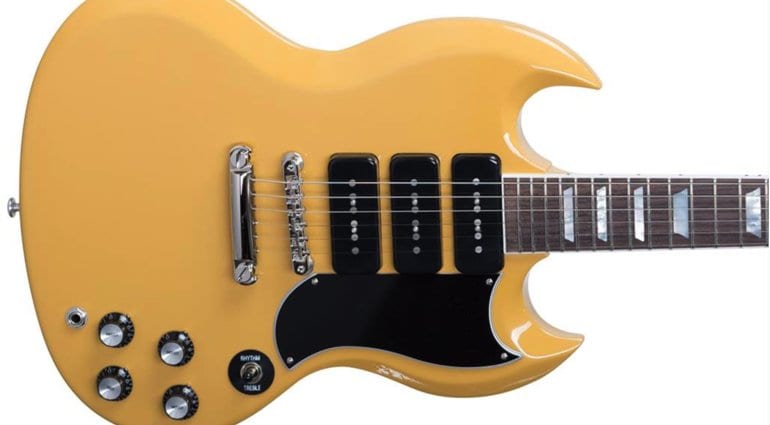

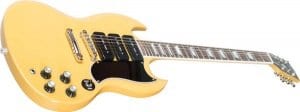
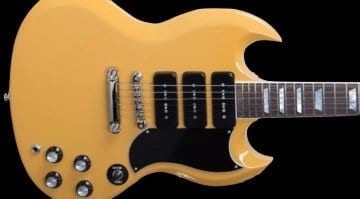

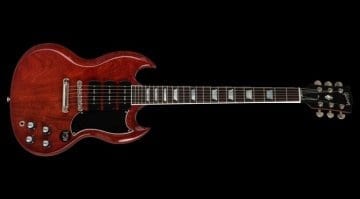
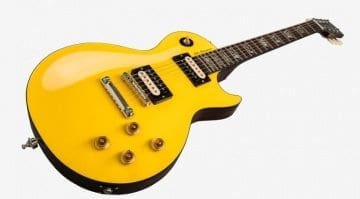
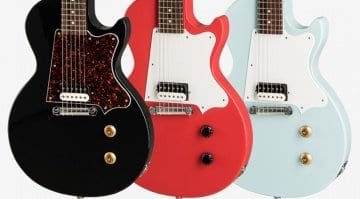
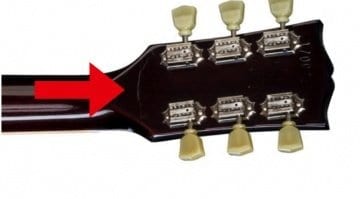

The setup of this guitar from the factory was terrible but thats not the real problem. The new electro-charged finish has made this guitar unplayable when plugged in. The static electric pops are unbearable. I tried everything from shielding, humidifier, and static dryer sheets. Nope. Gibson said to send it back to them and they will look at it. I’ll just sell it and get something else. Very dissatisfied.
I own several guitars which “stock as shipped new” exhibit a rice crispy crackle sound that is directly coincident with full strums on the guitar. Makes you wonder if the production crew at Fender or Gibson are deaf.
Solve Electrostatic Discharge “rice crispy” sounds
https://www.vguitarforums.com/smf/index.php?topic=12895.msg78045#msg78045
Static crackle
https://www.thegearpage.net/board/index.php?posts/26041897/
ESD Static charge “rice crispy noise as you strum” has been a battle with most guitars that feature a full plastic pickguard. The original Late 50’s – early 1960’s Strats , Jazzmasters, Jaguars all used a sheet of Aluminum cut to the same size of the plastic pickguard and provided shielding and static charge dissipation.
[img]http://www.eddievegas.com/images/products/6f2c6a6fa5cd9687a041537dc6310bc0.jpg[/img]
For example in 1961 Leo Fender tackled this electrostatic discharge issue on Strats by including a die cut piece of thin aluminum that matched the full size of the pick guard, that was laying directly under the early 1960’s Strat plastic pick guard, and tied it to earth ground. The large surface area of the metal under the pickguard provides a path to dissipate the excess electrons from static charged surface area of the plastic pickguard.
More details
https://electrostatics.com/staticelectricity.html
Today cheap strats only apply metal foil near the Vol / Tone pot control area – but neglect the open exposed plastic in the strumming areas.
( Are they deaf!, because I can clearly hear the rice crispy sound on my headphones when tracking Rhythm tracks on any guitar with a plastic pick guard that lacks a metal foil shield )
If you don’t shield the entire plastic pick guard – then while strumming midway through your first song, your hand movement across the pick guard creates a build up of electrostatic charge upon the dielectric plastic pick guard surface area, and ESD discharge manifests as periodic “snapping / cracking” noise being induced directly into the guitar’s audio output signal with each new strum, or hand movement near the pick guard due to electrostatic discharge.
the new problem is in a goal to increase daily production yield, manufacturer’s have begun using electrostatic coating techniques for applying the paint finish, which today’s formulations no longer adhere to the 1950’s Lawrence MacFadden nitrocelluolose lacquer formulations
http://www.lmii.com/nitrocellulose-lacquer-solvent-based
Instead today, companies have migrated to Electrostic coating process for guitars, which allows them to paint more guitars per day
https://en.wikipedia.org/wiki/Electrostatic_coating
But there are side effects from this process.
I have a 2013 GIbson SG and its a bit of a nightmare with lots of static discharge rice crispy noises – even touching the plastic covers on the P90 pickups yield lots of ESD noise in the audio path from the guitar
I had to line the bottom inside of the P90 plastic cover with copper tape and tie to earth ground to minimize this ESD effect, but the effect remains due from the panted surface area.
Part of why I choose Gibson Custom Shop guitars, which are still painted in the older nitrocelluolose lacquer application process they used back in the 1960’s.